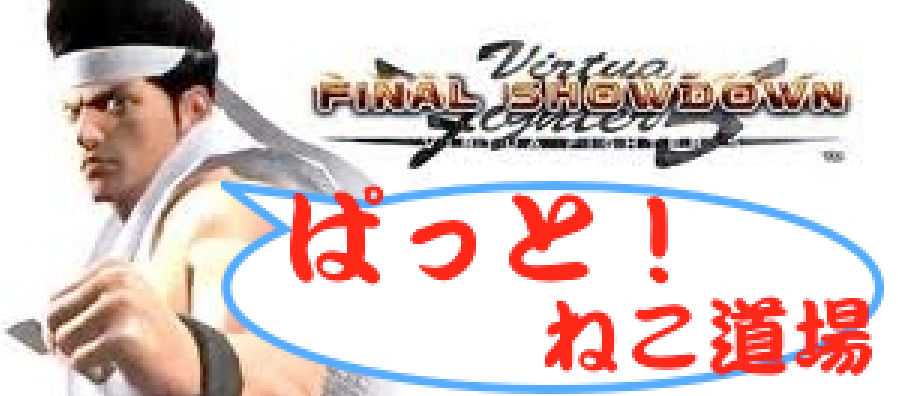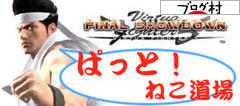Arriving at
・Attacks with Air Detection
・Jumping Attacks
・Practice of Jumping Attacks
・Attacks with Air Detection
・Jumping Attacks
・Practice of Jumping Attacks
6・7 Attacks with Air Detection

Figure 6−14

Diagram 6−3
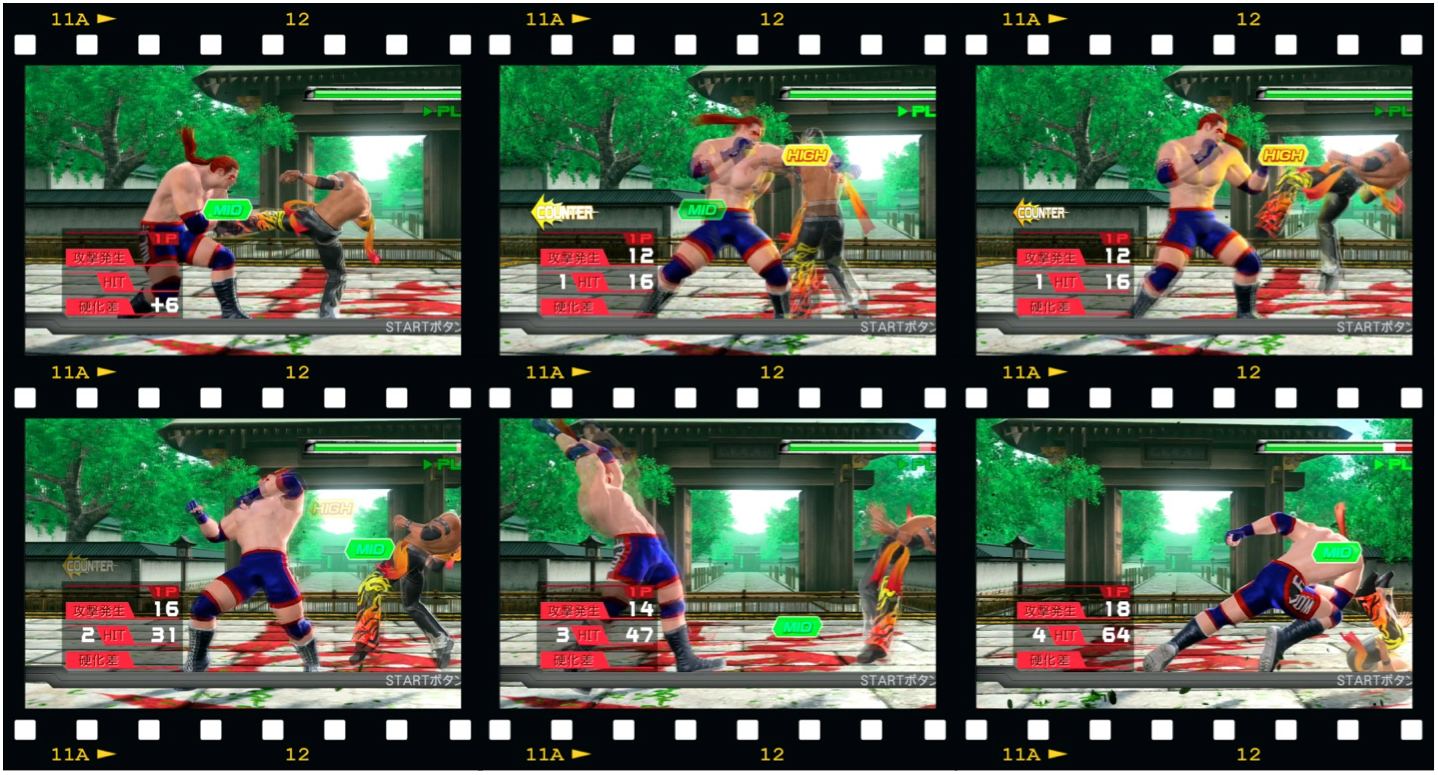
Figure 6−15
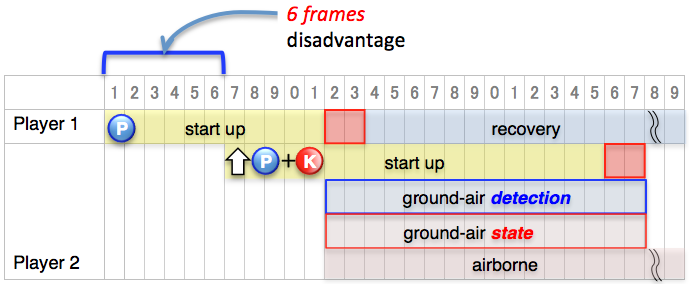
Diagram 6−4

Figure 6−16

Diagram 6−5
6・8 Jumping Attacks

Figure 6−17

Figure 6−18

Diagram 6−6

Figure 6−19

Diagram 6−7

Figure 6−20

Figure 6−21. click here if you want to see Supporting Information 1.

Diagram 6−8

Figure 6−22. click here if you want to see Supporting Information 2.
6・9 Practice of Jumping Attacks

Figure 6−23

Figure 6−24. click here if you want to see follow-up combo.
Note
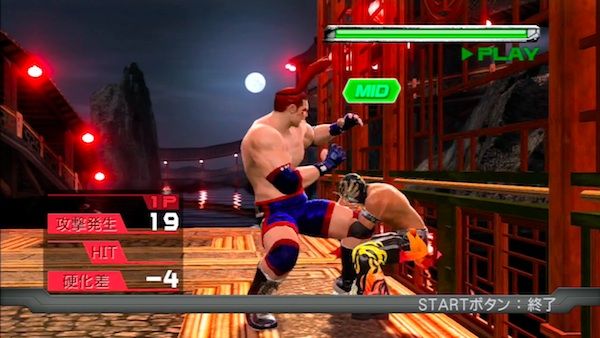
Figure 6−25
We promised in previous sections that a much more detailed analysis of air detection would appear and here it is.[1,2] In addition, we introduce the concept of air states in the last of this section.
The discussion of Lion’s Senputai 8K[3] was straightforward since it enters air detection on its first execution frame.[2,4] However, you should appreciate that the most of attacks containing the air detection aren't so simple. A touchy subject of air detection may arise with regard to Blaze’s Jumping Hammer Knuckle 8P+K (20 frames attack), which are usually applied to beat Throws[5] and/or Low Attacks[2] (Figure 6−14). Jumping Hammer Knuckle enters air detection on its 6th execution frame, so it avoids 12 frames Low Punch 2P at up to 6 frames disadvantage[6] (Diagram 6−3).

Figure 6−14

Diagram 6−3
Following the same setup, Player 1 now chooses to counter attack with a 12 frames standing punch P instead, and the High Attack vanquishes Jumping Hammer Knuckle (Figure 6−15). Moreover, this standing P would result in knock down because Player 2 have already became in air state, which provides opportunity of further combo (Diagram 6−4, See also chapter 6−1, section 6・1[1]).

Figure 6−15

Diagram 6−4
The figure below has Player 1 advantaged by 7 frames due to Counter Hit of Player 1's 2P (Figure 6−16). As with the example above (Figure 6−15), Player 1 then attempts standing P against Player 2's Jumping Hammer Knuckle. As expected, Player 1's choice of P gives Counter Hit[7] but would result in utterly miserable 8 frames advantage involving only 16 pt of damage. Now you have to look at Diagram 6−5 carefully. Player 1’s standing P reaches Active Phase[4] faster than the first frame of air state of Jumping Hammer Knuckle, so the P has left Player 2 standing on the ground. You will meet a more advanced strategy in chapters 20[8] and 27.[7] Our message is that:
|

Figure 6−16

Diagram 6−5
6・8 Jumping Attacks
Jumping Attacks was introduced even in Virtua Fighter 1 (since 1993) but established during Virtua Fighter 5 Final Showdown (since 2010). You might think that Jumping Attacks are not different from ordinary attacks mentioned in section6・7 at all. However, the merits of Jumping Attacks are now being recognized once again as these attacks have unusual properties.[9]
We described the difference between states and detections in section 6・5.[2] Another example on this subject is here. Similar to Jumping Hammer Knuckle, Wolf’s Jumping Push Kick 9GK can be used for an avoidance of 2P at up to 4 frames disadvantage (Figure 6−17). This result indicates that Jumping Push Kick enters air detection on its 8th frame.

Figure 6−17
Meanwhile, a strange thing will happen if Player 1 uses Jumping Push Kick at 6 frames disadvantage (Figure 6−18). Notice that Player 2’s 2P gives knock down of Player 1 (Normal Hit!) because there is quite a difference between the first frame of air state and that of detection: The first frame of air state of Jumping Hammer Knuckle is its 6th frame (Diagram 6−6).

Figure 6−18

Diagram 6−6
Masuo Pai reported the exceptional utility of Jumping Attacks based on unusual properties of them.[9] In Figure 6−19, Player 1 has 8 frames advantage, and then attempts Jumping Push Kick (19+1 frames attack) against Player 2's 12 frames punch P. Player 1. You wouldn't get upset by the expected result.

Figure 6−19
The frame chart below is the key to the mystery of Jumping Push Kick 9GK (Diagram 6−7). Player 1 entered 9G and then tapped K before the last frame of Input Buffer.[10] Undoubtedly, Jumping Push Kick executes in 20 frames. However, there are only 13 frames of start up, and 6 frames of blank time will command considerable attention. At up to 6 frames advantage, this blank time would prove a great boon if the opponent elects Defensive Move, DM[11] (Figure 6−20). The discussion of DM begins on chapter 30, so you need not get worked up yet even if you have no idea what happened here.[11]

Diagram 6−7

Figure 6−20
The other features of Jumping Attacks would be deserved special consideration. If Player 1 entered 9G and then tapped K after the last frame of Input Buffer, amazingly, Jumping Push Kick executes in 19 frames (Figure 6−21). Therefore, this special Jumping Push Kick vanquishes 12 frames punch P even at 7 frames advantage (Diagram 6−8).

Figure 6−21. click here if you want to see Supporting Information 1.

Diagram 6−8
The frame chart above is worth looking at again as there is additional feature of Jumping Attacks: there are only 9 frames of start up (See also Diagram 6−7: click here). Thus, Player 2 cannot perform successful DM even at 9 frames disadvantage as the special Jumping Attack reaches start up phase later than the end of Player 2’s Recovery Phase (Figure 6−22. See also Figure 6−20).

Figure 6−22. click here if you want to see Supporting Information 2.
6・9 Practice of Jumping Attacks
On this stage, you have to recall the concept described in section 6・5.[2] The figure below has Player 1 advantaged by 5 frames in close proximity to wall (Figure 6−23). Subsequently, Player 1 performs Savate 4K (16 frames attack) to vanquish 12 frames punch, and here Player 2's choice standing P would have come to a sad conclusion, Wall Stagger.[2]

Figure 6−23
If Player 2 elects Low Punch 2P, Savate would not cause any Wall Hit Effects (Note: see below. See also Figure 6−10: click here).[2] However, Player 2 might avoid making this decision since Player 1 equips Jumping Push Kick. Player 2’s worries are realized as Wall Slump[12] in Figure 6−24. As mentioned above, Player 2 cannot choose DM (click here to see Supporting Information 3) as well as Low Attacks.

Figure 6−24. click here if you want to see follow-up combo.
Note
- In this scenario, Player 1 might choose Arrow Knuckle 3P as both Player 2’s standing and crouching P cannot avoid Wall Stagger.
Furthermore, Jumping Push Kick results in only 4 frames disadvantage even if it would be blocked (Figure 6−25). In chapter 11, you will confirm again the strength of Jumping Push Kick with respect to avoiding High Throws.[13]

Figure 6−25
References
[1] Attack Levels 1
[2] Attack Levels 2
[3] VF Moves Project: ttp://vfmoves.blogspot.jp/
[4] General Properties of Attack
[5] General Properties of Throw 1
[6] Advantage and Disadvantage
[7] Forced Choice after Counter Hit
[8] Brief Discussion of Defensive Techniques
[9] マスオパイのメモ: ttp://mpainomemo.exblog.jp/16775193/
[10] Top Tips for Command Input 1
[11] General Properties of Defensive Move 1
[12] Forced Choice after Wall Hit
[13] Fuzzy Guarding 1
[1] Attack Levels 1
[2] Attack Levels 2
[3] VF Moves Project: ttp://vfmoves.blogspot.jp/
[4] General Properties of Attack
[5] General Properties of Throw 1
[6] Advantage and Disadvantage
[7] Forced Choice after Counter Hit
[8] Brief Discussion of Defensive Techniques
[9] マスオパイのメモ: ttp://mpainomemo.exblog.jp/16775193/
[10] Top Tips for Command Input 1
[11] General Properties of Defensive Move 1
[12] Forced Choice after Wall Hit
[13] Fuzzy Guarding 1
プライバシーポリシー
本サイトではよりよいバーチャファイター攻略の提供を目的として,Google Analyticsを用いてアクセス情報を収集しています.Google Analyticsは,ファーストパーティCookieを利用して利用者のアクセス情報を収集します.アクセス情報の収集方法および利用方法は,Google Analyticsサービス利用規約およびGoogleプライバシーポリシーによって定められています.Google Analyticsについての詳細は,次のページをご参照ください:Google Analytics
